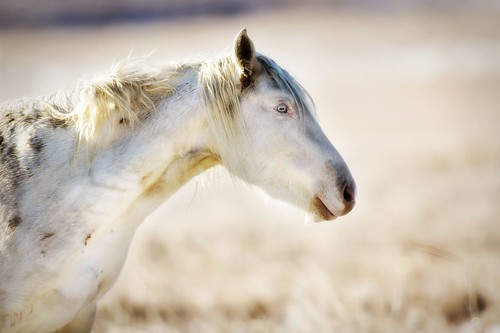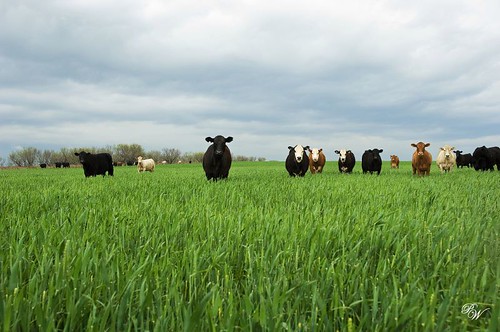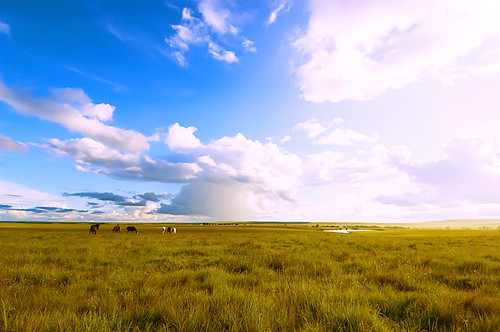What the Heck is an Aperture?
By Ree Drummond | Monday, March 16, 2009 at 10:07 am

[A NOTE FROM HARRY: Digital Media Central guest posts continue with a contribution from Ree Drummond, better known as Pioneer Woman. This digital photography post is republished from her site, and it’s part one of a series on apertures. Here are parts two, three, and four over on Ree’s site.]
Photography is based on light. Did you know that?
As a matter of fact, “Photos” is the Greek word for “Light.” And I happen to know that only because I’m a homeschooling freak of nature and I teach my children Greek and Latin. When I feel like it.
Anyway, light is everything in photography, and how much (or how little) light enters your camera determines what your ultimate photo will look like.
Are you with me so far?
If too much light enters the camera, the photo will be OVEREXPOSED, or TOO BRIGHT, or BLOWN OUT.
Let me repeat: TOO MUCH LIGHT=OVEREXPOSED=BLOWN OUT PHOTO.
Got it?
If too little light enters the camera, the photo will be UNDEREXPOSED, or TOO DARK, or…well, BLACK.
Let me repeat: TOO LITTLE LIGHT=UNDEREXPOSED=BLACK PHOTO.
But the right amount of light allowed into the camera will result in a photo that is properly exposed, or JUST RIGHT.
“But How Does Light Enter the Camera?”
Good question! I asked it about forty million trillion thousand hundred billion times before it finally clicked. And here’s the answer: How much light enters the camera depends on two different things:
1. The Aperture
2. The Shutter Speed
(ISO setting also affects exposure, but we won’t cover that today.)
I had no dadgum clue what either Aperture or Shutter Speed meant when I picked up my camera for the first time, so let me break it down for you. And remember: I’m not a professional, which means I’m basically just feeling my way through this. So if something I say doesn’t make sense, please stone me in the public square so I can rephrase it.
1. The APERTURE is the circular mechanism inside your camera that opens and closes when a picture is taken. You can set the aperture to remain very open when the picture is taken, or you can set it to close very tightly when the picture is taken, and all degrees in between. The larger the aperture remains open when the photo is taken, the MORE light will enter the camera for each shot. The more tightly the aperture is allowed to close, the LESS light will enter the camera. The settings of the aperture openings are called “F-stops.” The confusing thing about the aperture is this: the larger the opening, the smaller the number. So:
f22 would mean a very tightly closed aperture opening.
f1.4 would mean a very wide open aperture opening.
Which aperture you choose often depends on the depth of field you want. In layman’s terms, DOF (depth-of-field) refers to how much of the photo is in focus and how much is blurry.
A very shallow depth of field would mean the subject (a person, a flower) is in focus, but the background is very blurred.
These were taken with an aperture setting of 4.2—a low number, a large opening.


(Just think about how difficult it is to focus when you have your pupils dilated! It’s because the “aperture” or pupil is wide open!) If your pupils had just been dilated and you were trying to stare at these horses, it would be difficult to focus. The background would probably be blurry and you might be able to make out the horses, but that’s it. Then you’d cry and put on your cardboard glasses and feel really funky for four hours.
A very large depth of field would mean everything in the photo (a wide landscape, trees in the foreground, mountains in the background) are equally in focus:

I realize there are no mountains or trees here. But this shot was taken with a small aperture, about f22. Notice how the grass, the cows, and the trees are all (pretty much) in focus?
Here’s another one:

In focus as far as the eye can see.
SO.
If you want a very shallow depth of field (background blurry), you’d choose a very large aperture opening, which would be a very low number. (f2.8)
If you want a very large depth of field (everything in focus), you’d choose a very small aperture opening, which would be a higher number. (like f22)
Love,
Pioneer Woman
3 Comments
Read more:
2 Comments For This Post
1 Trackbacks For This Post
-
Granite Planet Photography Podcast « Todd Williams: Photography, Social Media, Observations Says:
July 29th, 2009 at 9:38 am[…] What the Heck is an Aperture? (technologizer.com) […]













April 27th, 2009 at 3:26 pm
Very cool article & informative! Thx
July 28th, 2009 at 7:15 pm
AYE!! love the work this is great stuff. im making a information folder. on photograhy and would love to see more.